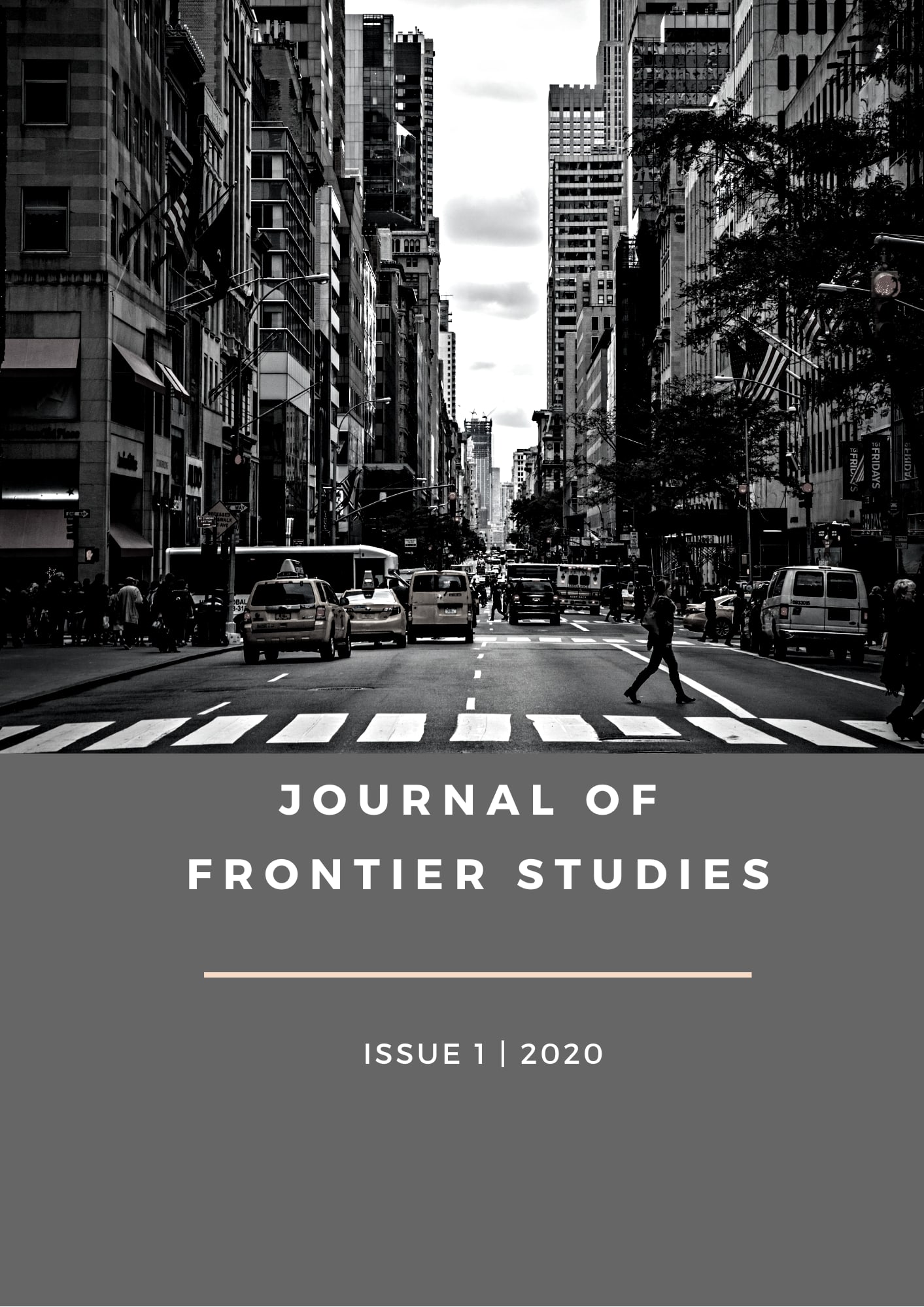Abstract
The article formulates a range of problems related to both the contemporary Philosophy of the City and studies of the semantic space of the urban environment. The multidirectional intentions of the authors of this issue are summarized with a search for specific links between identity processes and the formation of spatial-territorial “fields”. This view lets us focus on the study of the urban environment in the 21 century including describing space in the city as “zones of cultural exclusion” (such as closed access areas, marginalized territories and other geographically isolated spaces) in their correlation with urban cultural topos.
Modern meta-cities as huge public spaces require discourse on identity and identification within the current Philosophy of the City. The “reassembling” of urban spaces, according to the actor-network theory, is considered in the context of rethinking the questions of urban identities.
Issue’s focus is on the boundaries of identity and spatial boundaries in the city as well as on cultural and social practices that transform territorial barriers, remove old ones and contribute to the emergence of new ones. There is a connection between this modern phenomenon and the historical processes preceding it. The article provides examples of such an appeal to the experience of the past. Among the other approaches to this topic, the article presents studies completed on literary material, where the search for identity occurs in the conditions of constructing or overcoming borders. The ways of cultural identity are traced, including these of language and border areas of language culture.
References
Akkerman, A. (2009). Urban Void and the Deconstruction of Neo-Platonic City-Form. Ethics, Place & Environment. A Journal of Philosophy & Geography, 2(12), 205–218.
Appadurai, A. (1996). Modernity at Large: Cultural Dimensions of Globalization. Minneapolis; London: University of Minnesota Press.
Augé, M. (1999). From the city of the imaginary to the city of fiction (transl. V. Misiano). Moscow Art Magazine, 24. Retrieved from http://moscowartmagazine.com/issue/75/article/1623 (In Russian)
Augé, M. (2017). Non-places: an introduction to hypermodern anthropology. Transl. A. Yu., Konnov. Moscow: New Literary Observer. (In Russian)
Bauman, Z. (1992). Intimations of Postmodernity. London, New York: Routledge.
Bialasiewicz, L. (2009). Europe as/at the border: Trieste and the meaning of Europe. Social & Cultural Geography, 10(3). 257–269.
Billé, F. (2013). Territorial phantom pains (and other cartographic anxieties). Environment and Planning D: Society and Space, 31(1) 163–178.
Caldwell, M. (2011). Dacha Idylls: Living Organically in Russia's Countryside. Berkeley: University of California Press.
Deleuze, G. & Guattari, F. (2010) A Thousand Plateaus. Capitalism and Schizophrenia. (Transl. and afterglow. by Ya. Svirskiy) Yekaterinburg: U-Factoriya, Moscow: Astrel. (In Russian)
Foucault, M. (2006). Other Spaces. In Intellectuals and power. Selected political articles, speeches and interviews (pp. 191–204). Moscow: Praksis. (In Russian)
Friedman, J. (1994) Cultural Identity and Global Process. London, Thousand Oaks, California: SAGE.
Hall, S. (1996). Introduction. Who Needs 'Identity'. In S. Hall & P. Du Gay (Eds.) Questions of cultural identity. London: Sage, 1996.
Hannerz, U. (1992). Cultural Complexity: Studies in the Social Organization of Meaning. New York: Columbia University Press.
Heidegger, M. (1997). Building Living Thinking. In Lectures and essays (pp. 120-180). Stuttgart: Neske Verlag. (In German)
Latour, B. (2005). Reassembling the Social. An Introduction to Actor-Network-Theory. Oxford: Oxford University Press.
Lefebvre, H. (2010). Social space. Neprikosnovennij Zapas. Debates on politics and culture, 2(70), 3–14. (In Russian)
Lovell, S. (2003). Summerfolk: A History of the Dacha, 1710-2000. Ithaca and London: Cornell University Press.
Mills, C. W. (2001). The Sociological Imagination (transl. O. Oberemko). Moscow: Nota BENE Publishing House. (In Russian)
Nikolaeva, Zh. & Troitskiy, S. (2018). An Introduction to Russian and International Studies of Cultural Exclusion Zones. Rivista di Estetica, n.s., 67(1), LVIII, 3–19.
Nikolaeva, Zh. V. & Noskov, A. A. (2019). Reflection of the Time Phenomenon in St. Petersburg’s Ontic Contours. Neprikosnovennij Zapas. Debates on politics and culture, 1(123), 107–114. (In Russian)
Savchuk, V. (2012). The Fence as a Kind of Media. International Journal of Cultural Reserch, 4(9), 105–111. Retrieved from https://culturalresearch.ru/files/open_issues/04_2012/IJCR_04(9)_2012_Savchuk.pdf (In Russian)
Sharifian, F. (2017) Cultural Linguistics. Cultural conceptualisations and language. Amsterdam/PA: John Benjamins. (Cognitive Linguistic Studies in Cultural Contexts, 8).
Simmel, G. (2002). The Metropolis and Mental Life. Logos, 3-4, 23–34. (In Russian)
Struyk, R. J. & Angelici, K. (1996). The Russian Dacha phenomenon. Housing Studies. 11(2), 233–250. DOI: 10.1080/02673039608720854
Tilley, C. (2006). Identity, Place, Landscape and Heritage. Journal of Material Culture, 11(1/2), 7–32. DOI: 10.1177/1359183506062990
Vakhshtain, V. S. (2014). Reassembling the City: between space and speech. Sociology of power, 2, 9–38. (In Russian)
Zamyatin, D. N. (2006). Culture and space. Modeling geographic images. Moscow: Znak. (In Russian)

This work is licensed under a Creative Commons Attribution 4.0 International License.

